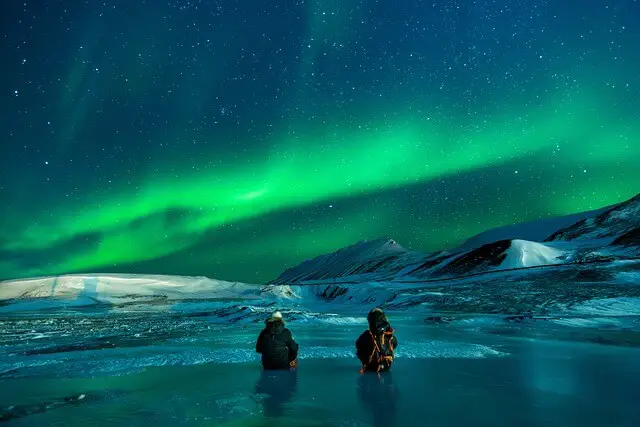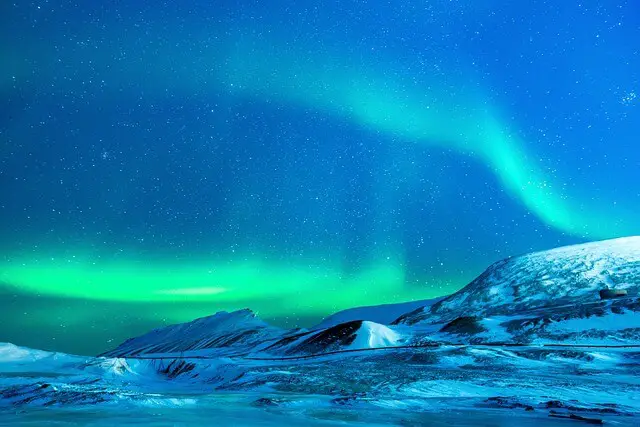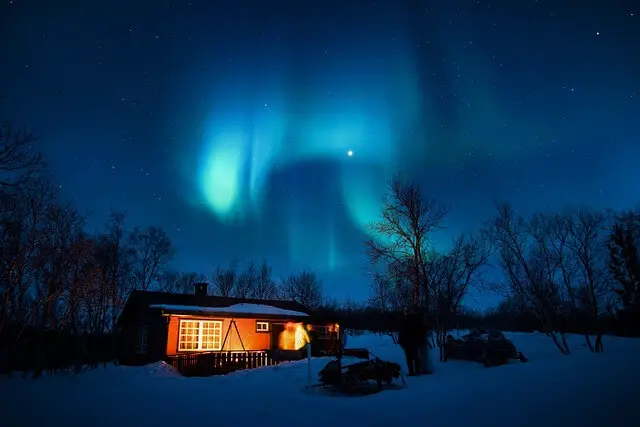The Northern Lights, also known as the aurora borealis, are one of nature’s most spectacular displays. They are usually visible in high-latitude areas, such as Alaska and Canada. However, they can occasionally be seen at lower latitudes as well. In fact, there have been reports of the lights being visible as far south as Florida and Hawaii!
What Causes The Northern Lights
When electrically charged particles (originating from the sun’s atmosphere) collide with gaseous particles in the atmosphere of Earth at the fastest speed, it causes the northern lights or Aurora Borealis.
The upper atmosphere of the sun (corona) continuously releases a stream of charged particles in all directions, which is known as the solar wind. These charged particles move at the speed of about 72 million kilometers per hour (45 million miles per hour). As the earth revolves around the sun, a small portion of charged particles from the solar wind also hit the Earth’s upper atmosphere (ionosphere). However, the strong magnetic field of the Earth deflects most (about 98%) of these energized particles and prevents them from entering the Earth’s atmosphere. A small portion that leaks through the magnetic field of the Earth enters the atmosphere, which is then redirected towards the North and South poles by the Earth’s magnetic field.

In the Earth’s atmosphere at the poles, these charged particles strike atoms and molecules, depositing energy and exciting them. It creates glowing rings and causes the fluorescence of the atmosphere. The phenomenon is known as northern lights (aurora borealis) in the Northern Hemisphere, and southern lights (aurora australis) in the Southern Hemisphere.
History Of The Northern Lights
The name “Aurora Borealis” originated from “Aurora”, which was a Roman goddess of dawn, and “Borealis”, a Greek god of the north wind. Galileo Galilei gave this name to northern lights in 1619. The phenomenon of northern lights is also found in the historic records and North American legends. A cave painting in France, which is 30,000 years old, notes northern lights that are probably the earliest record of the northern lights. A royal astronomer in Babylon during the reign of NebuchadnezzarII inscribed the phenomenon of northern lights on a tablet that dates back to 567 B.C. According to NASA, a 193 B.C. old Chinese report also accounts for the northern lights.
At the beginning of the 20th century, Norwegian scientist Kristian Birkeland proposed the scientific theory about the causes of northern lights. According to his theory, the emission of electrons from the sunspots creates light, which is directed towards the poles by the magnetic field of the Earth. This theory proved correct in 1967 when a probe was sent into space, however, Birkeland was not alive and died long before in 1917.
Why Different Colors Appear In The Northern Lights?

The reason for the different colors in the northern lights is the existence of different atoms and molecules in the atmosphere. Each type of atom and molecule can absorb and radiate only a unique set of colors, similar to the fingerprints of humans which are unique for every person. Green and red are the most common colors in the northern lights. The green color is due to the excitation of oxygen molecules, while the red color is due to nitrogen molecules.
Do The Northern Lights Happen Every Night?
Northern lights are unpredictable and may happen every night or may not happen every night. If you want to see northern lights, a dark and clear night sky can increase the chances.
The northern lights usually appear between 17:00 and 02:00. It commonly does not display for a long time, it may only last for a few minutes and then disappear.
How Often Do Northern Lights Happen?
The northern lights happen frequently. Chad Blakely, who is a photographer and owner of the northern lights tour company Lights Over Lapland, said that “The northern lights are happening 24 hours a day, seven days a week, 365 days a year,”. However, a viewer should be at the right place at the right time to view the display of the northern lights.


